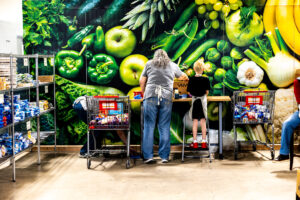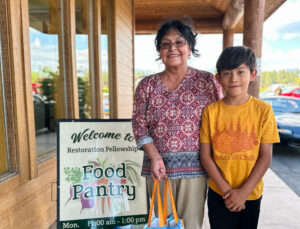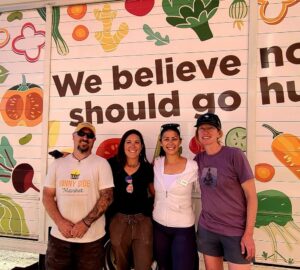Do you know about food deserts?
A food desert is any area in ones community that is more than 1-2 miles from a grocery store…a place where one can buy fresh and ‘real’ food. Real food should not be confused with processed food, which comprises most of the rows in a typical supermarket. From Cheerios to pasta sauce, it’s not real food unless your grandmother would have recognized it as food.
Only 6% of residents in Colorado Springs live within one mile, or walking distance, from a grocery store. This means that many of our working poor end up shopping at convenience stores, which are more expensive and sell almost no ‘real’ food.
I have a well-running vehicle that I used to drive myself to the King Sooper, where I bought most of the food I’m eating this week. I am fortunate. I could have also taken public transportation, but our local bus system isn’t convenient, as it mostly runs on an hourly basis, and any perishables I purchase could be in jeopardy of spoiling if I miss even one bus.
Food deserts weren’t always around. There was a time, in the not too distant past, when most neighborhoods had a small market within walking distance of most homes. This changed with the onset of Euclidean zoning, which abruptly stopped the building of traditional, multi-use neighborhoods in favor of neighborhoods that separate zoning types from each other. This means that a family’s closest supermarket is often at least 5 miles away, across many busy streets, and impossible for one to navigate on foot or bike.
As someone who is working to create a local Food Policy Advisory Group, my hope is that there will be policy recommendations in the future that encourage more walkable and bikeable communities, where all residents can safely walk or bike to buy real food for their families. For those who don’t own vehicles or can’t afford the rising cost of gas, this will help them to spend less on transportation costs, less on food, and allow them to buy ‘real’ food more cheaply.
Other policy recommendations will focus on softening HOA rules to allow more families to use their yards to grow gardens, to increase the land available for community gardens, and to promote the building of urban farms instead of golf courses and community centers.
All of these changes will help our low-income community members to eat more healthily on a budget. And I think this is a great thing.
By the way, I’m counting the minutes until dinner, when I will eat leftover pasta from last night’s dinner. I will also eat a couple of tomatoes from my own garden. Have you ever noticed that homegrown tomatoes taste so much better than store-bought ones? Plus they are organic, packed with vitamins, and completely free to me.
Enough said.
Jill Gaebler
Council Member
City of Colorado Springs





